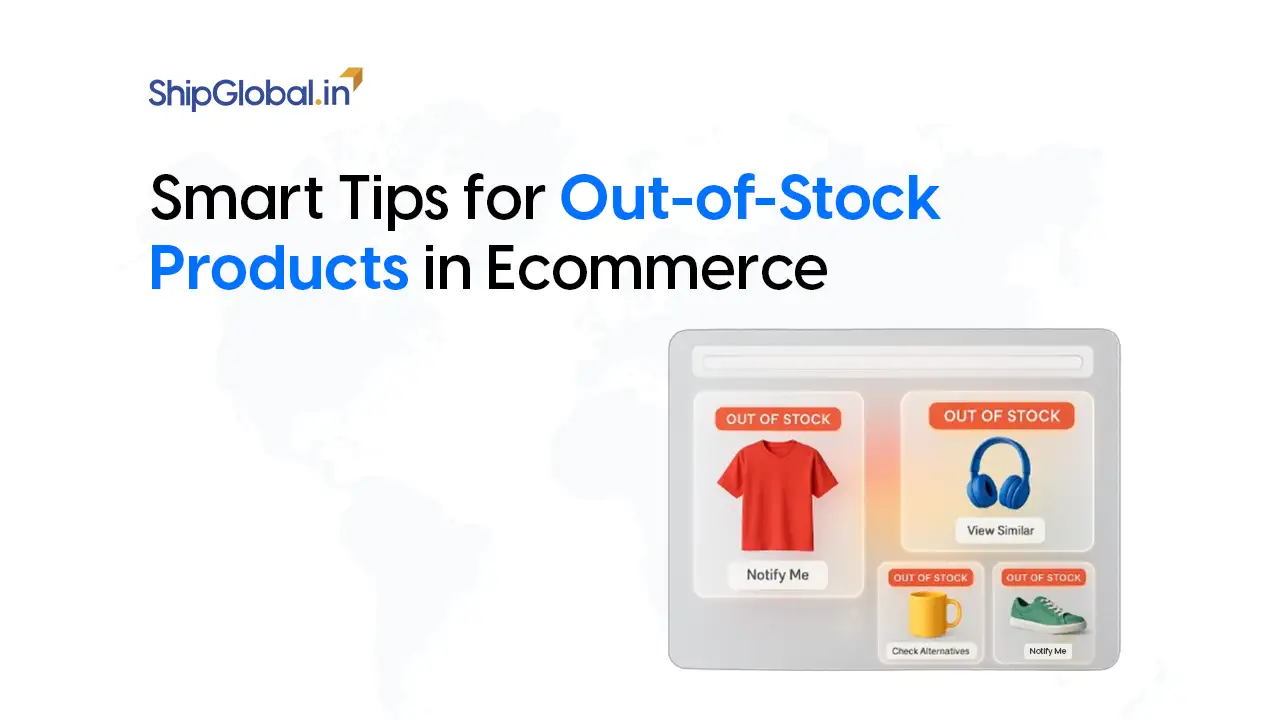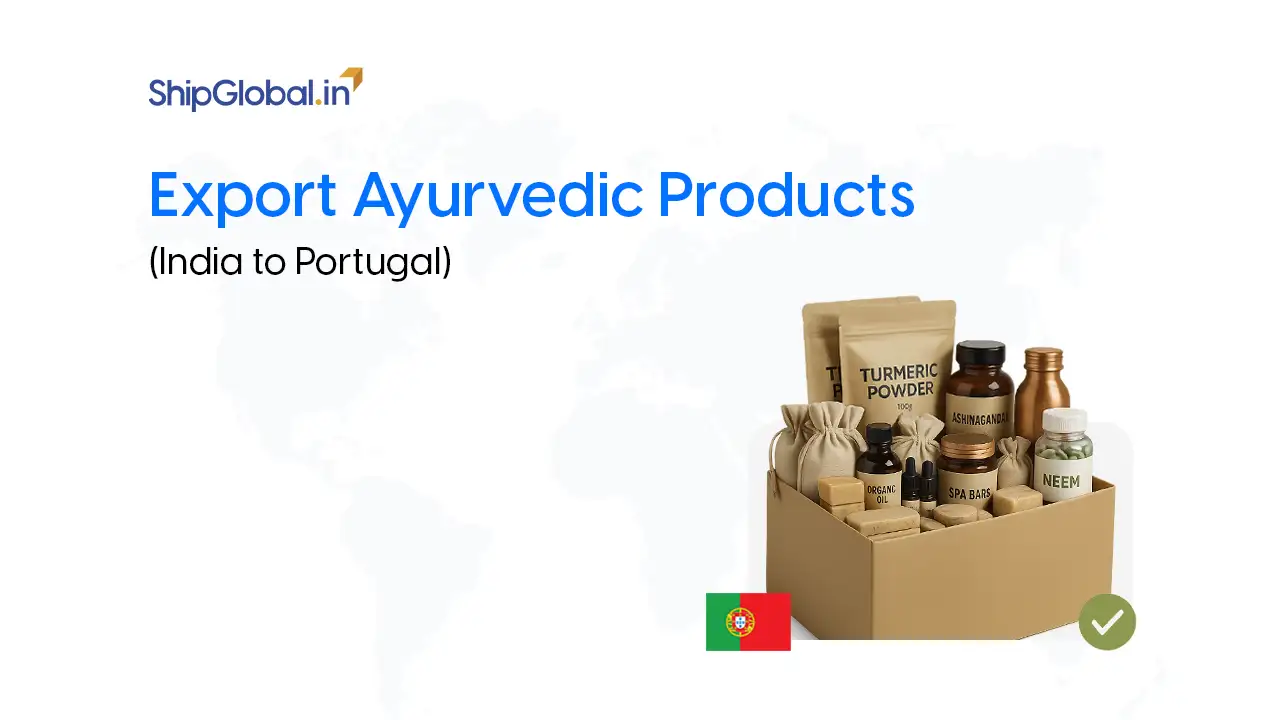So, you’ve created or sourced beautiful Indian handicrafts, maybe hand-carved wooden statues from Saharanpur, embroidered textiles from Gujarat, or delicate blue pottery from Rajasthan, and now you’re thinking, “How do I ship these to customers in France?”
Welcome to the world of handicrafts export to France, a growing opportunity that connects Indian artisans with European buyers who truly appreciate traditional craftsmanship. French consumers love products that tell a story, celebrate cultural identity, and bring uniqueness into their homes—and Indian handicrafts deliver all that and more.
But shipping these handmade treasures isn’t as simple as wrapping them up and sending them off. From fragile item packaging and custom packaging for handicrafts, to navigating customs clearance in France, choosing the right shipping method, and staying on top of costs—it’s a process that requires thoughtful planning.
Let’s walk through everything you need to know to confidently and cost-effectively manage your handicrafts export to France.
Why the French Market is Ideal for Handicraft Export to France
France has a long-standing appreciation for art, design, and craftsmanship. Products that are handmade, sustainable, and culturally authentic are in high demand. Indian handicrafts, whether it’s block-printed textiles, intricate brass decor, handwoven baskets, or traditional pottery, fit right into this lifestyle.
That’s why many small and medium businesses are seeing real potential in exporting their creations to France. However, to build trust and loyalty with international customers, your logistics must be as refined as your craftsmanship.
Packaging Essentials for Safe Handicraft Export to France
Fragile Item Packaging
Most Indian handicrafts, ceramics, glassware, wooden idols, and even fabrics need careful handling. That makes fragile item packaging essential.
Your packaging should ideally include:
- Bubble wrap for all-around cushioning
- Foam inserts to prevent shifting during transit
- Thermocol or air pillows for shock resistance
- Strong, double-walled corrugated boxes
- For very delicate items, wooden crates with inner cushioning
Your goal should be to minimize movement and impact. This not only reduces breakage but also reflects professionalism.
Custom Packaging for Handicrafts
Because no two handicraft pieces are exactly alike in size or shape, investing in custom packaging for handicrafts pays off. Custom-fit boxes and inserts can dramatically reduce damage and even shipping costs by minimizing package volume and weight.
Custom packaging also enhances brand experience. When your customer in Paris opens a box that’s thoughtfully packed, labeled, and aesthetically pleasing, they’re more likely to return and recommend.
Secure Wrapping and Labeling
After the item is safely packed, it needs to be labeled correctly. Use handling labels like:
- “Fragile – Handle with Care”
- “This Side Up”
- “Do Not Stack”
Also, apply country of origin labels clearly on the outer packaging. “Made in India” should be visible and legible. This is not just for customs compliance but also reinforces the authenticity of your product.
Tamper-proof packaging and proper labeling reflect your commitment to quality and safety—things that matter deeply to French buyers.
Shipping Options for Handicraft Export to France: Air vs Sea Freight
One of the most important decisions in handicraft export to France is how you’ll ship your goods. Your options typically come down to air freight or sea freight, each with its pros and cons.
Air vs Sea Freight Rate Comparison
Air Freight
- Speed: Delivery typically takes 4 to 7 days from India to France
- Cost: Expensive, especially for bulky items (charged by volumetric weight)
- Best for: Small, high-value, or urgent orders like festival or wedding gifts
Sea Freight
- Speed: Takes about 25 to 35 days, depending on the port
- Cost: More economical for large shipments
- Best for: Bulk or non-urgent orders such as furniture or textiles
If you’re selling smaller items via eCommerce or to boutique stores, air freight might be ideal despite the cost. For wholesalers or trade show consignments, sea freight becomes the more logical option.
Compare air vs sea freight rates periodically, as seasonal and fuel-based fluctuations can affect pricing.
How Freight Forwarders Help in Handicraft Export to France
If you’re shipping regularly or in large volumes, partnering with a freight forwarder from India to France is a smart move. These companies act as middlemen between you and the shipping lines or airlines.
They help with:
- Booking cargo space
- Organizing paperwork
- Handling customs clearance in France
- Insurance and tracking options
- Ensuring compliance with both Indian and EU import/export regulations
Some reliable freight forwarders include Jeena & Company, Blue Dart-DHL Global Forwarding, and Allcargo Logistics.
They’ll also advise you on choosing the right INCOTERMS, which define your shipping responsibilities.
Postal vs Courier Services
If your orders are smaller and more frequent, you’ll need to choose between postal and courier services.
French Postal Service (Colissimo)
Colissimo, operated by La Poste, is France’s official postal service and is integrated with India Post. If you’re sending packages under 30 kg, this is often the most economical route. Delivery may take a little longer, but tracking and reliability are generally good.
Colissimo is ideal for Etsy sellers, small businesses, and new exporters testing the market.
International Courier (DHL, FedEx, UPS)
These carriers offer:
- Door-to-door services
- Fast delivery (often within 4–6 days)
- Full tracking and insurance options
- Assistance with customs clearance in France
DHL, FedEx, and UPS may charge more, but they offer unmatched speed, professionalism, and support for international documentation.
If you’re delivering to boutiques or fulfilling urgent online orders, these services make a strong case despite the cost.
Customs Clearance in France
One of the more complex (and often confusing) parts of handicraft export to France is clearing customs.
Here’s what you’ll need:
Import Documentation Requirements
- Commercial Invoice: Includes product value, description, and HS Code
- Packing List: Describes the contents of each package
- Bill of Lading or Airway Bill
- Certificate of Origin: States the product was made in India
- EORI Number (Economic Operation Registration and Identification) : Required for all EU importers
- Product-specific licenses, if needed
Work with your courier or freight forwarder to ensure these are completed accurately. Errors or missing documents can delay your delivery and increase costs.
HS Codes for Handicrafts Export to France
Every product exported needs a tariff classification known as the HS Code. These are essential for determining customs duty.
Here are a few examples:
- 4420 – Wood Marquetry and Inlaid Wood
- 6912 – Ceramic Tableware and Kitchenware
- 8306 – Decorative Metal Items like bells and gongs
Choosing the correct HS Codes for handicrafts ensures your shipment moves smoothly through customs and helps avoid overpaying on duties.
Understanding INCOTERMS (FOB, DAP, DDP)
INCOTERMS are international shipping terms that define who is responsible for what part of the shipping journey.
For example:
- FOB (Free on Board): You deliver the goods to the Indian port; the buyer handles everything afterward.
- DAP (Delivered at Place): You deliver to the buyer’s address, but they handle duties and taxes.
- DDP (Delivered Duty Paid): You handle shipping and customs duties. The buyer just receives the goods.
If your customer wants a seamless experience, DDP is a good choice. If you want to limit your liability, go with FOB or DAP.
Transit Time from India to France
Shipping times depend on the method you choose:
- Air Freight: 4 to 7 days (faster with express courier services)
- Sea Freight: 25 to 35 days (port-to-port)
Always factor in a buffer for customs processing and seasonal delays, especially around major holidays like Christmas or Diwali.
Shipping Cost Optimization
Here are a few strategies to keep your shipping costs under control:
- Consolidate orders: Ship in bulk to save on per-unit costs
- Use dimensional packaging: Reduce package size without compromising safety
- Negotiate courier contracts: Many companies offer lower rates for consistent volume
- Choose the right INCOTERM: DDP might cost more upfront, but it makes for a better customer experience
- Compare air vs sea freight rates regularly
Every rupee you save on shipping goes straight to your bottom line—or can be reinvested in better packaging and marketing.
Final Thoughts
The journey of handicraft export to France is filled with opportunities. French buyers value craftsmanship, story, and quality, and Indian artisans have all three in abundance. But to succeed in this market, your logistics must be as carefully planned as your product design.
From custom packaging for handicrafts and fragile item packaging to managing customs clearance in France, choosing the right freight forwarder from India to France, and optimizing shipping costs, every detail matters.
FAQs
Yes. You need an Import Export Code (IEC) from the DGFT. Some items may also require specific clearances or certifications.
Use air freight for smaller, urgent, or high-value items. Sea freight is better for larger or less urgent shipments due to cost savings.
Always opt for fragile item packaging and choose tracking and insurance options from your courier. Most major carriers offer insurance coverage up to a certain value.
You’ll need a commercial invoice, packing list, country of origin certificate, EORI number, and correct HS Codes for handicrafts.
Focus on shipping cost optimization by combining orders, using custom-sized packaging, negotiating courier rates, and picking the right INCOTERMs.









